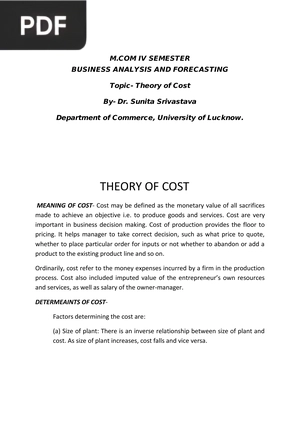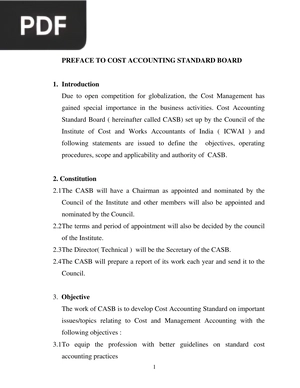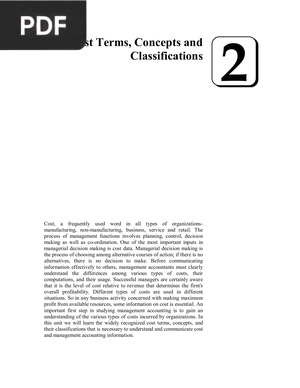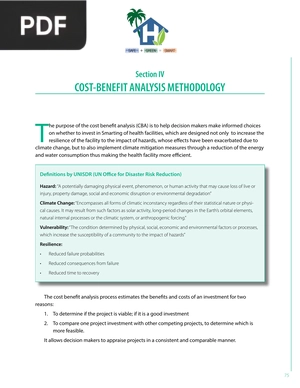Best Practices Guide for Indirect Costing (Article)
Author: Lipscomb University
*Wait a few seconds for the document to load, the time may vary depending on your internet connection. If you prefer, you can download the file by clicking on the link below.
Information
Description: Best Practices Guide for Indirect Costing (Article) por Lipscomb University. This document provides guidance on understanding and managing indirect costs, especially within the context of U.S. Government contracts and grants. It's a valuable resource for organizations seeking to navigate indirect cost rate negotiations and ensure compliance.
Pages: 6
Megabytes: 0.12 MB
This may interest you
Theory of Cost
Extension: PDF | 13 pages
Theory of Cost by Dr. Sunita Srivastava presents a foundational understanding of cost concepts essential for business decision-making. This PDF explores various types of costs and their impact on pricing and profitability.
Preface to Cost Accounting Standard Board
Extension: PDF | 27 pages
Preface to Cost Accounting Standard Board por Institute of Cost Accountants of India presents guidelines and standards for cost accounting practices. This document is crucial for understanding the framework used to define objectives, procedures, scope, and authority in cost accounting.
Cost Concept
Extension: PDF | 45 pages
Cost Concept por Jashbhai Maganbhai Patel College of Commerce introduces the fundamentals of cost concepts in economics, including explicit, implicit, fixed, and variable costs. This document is valuable for understanding the basics of cost analysis in business.
Cost Terms Concepts and Classifications
Extension: PDF | 22 pages
Cost Terms Concepts and Classifications by Bangladesh Open University explains the fundamental concepts of cost accounting and classification. It's a valuable resource for grasping essential terminology and understanding cost behavior in organizations.
Cost Benefit Analysis Methodology
Extension: PDF | 21 pages
Cost Benefit Analysis Methodology por Pan American Health Organization offers a framework for decision-makers to assess the economic viability of projects, particularly in the context of health facilities and climate resilience. It details methodologies for calculating benefits and costs, making it a valuable resource for project appraisal.











































